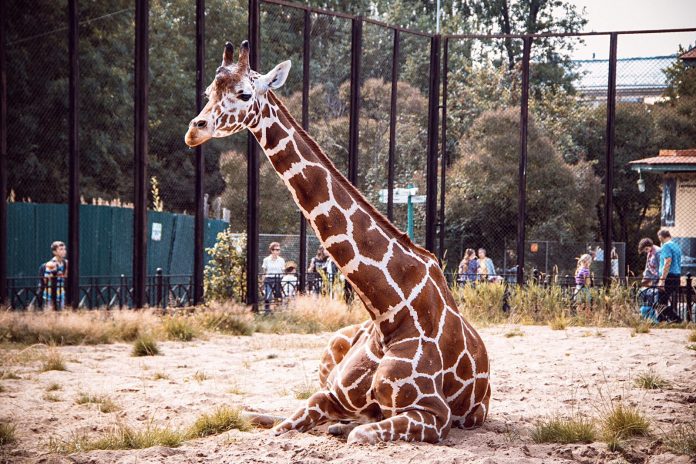On February 9, 2014, a healthy two-year-old giraffe named Marius was culled and subsequently, dissected in front of the public at Copenhagen Zoo. The zoo shockingly justified this action, claiming his genes were already represented in the captive giraffe population in Europe, and that there was limited space available for a young, male giraffe in zoos that were members of the European Association of Zoos and Aquaria (EAZA).
Parts of Marius’ body was then fed to the zoo’s carnivores. On the seventh anniversary of that appalling act, Born Free called for European zoos to phase out keeping giraffes in captivity, and instead, focus their conservation resources on the protection of giraffe populations in the wild.
“What on earth are we doing to these gentle giants in the name of conservation and education? Giraffes in captivity can suffer physically, psychologically, and socially. Their captive confinement delivers nothing for the true conservation of the species in its natural wild habitat,” Will Travers OBE Co-Founder of Born Free told WAN. “The future of wild giraffes is uncertain. We must do all we can to protect them and reduce the threats they face. But, for me, one thing IS certain: keeping these magnificent animals locked up for life is not the answer. That’s why Born Free is doing what it can to keep them where they belong – in the wild! Please share our report and thank you for your support.”
“A zoo is no place for giraffes, where these complex, social, wide-ranging, browsing animals are subjected to a life of social deprivation, environmental restrictions, and inadequate nutrition. As a result, giraffes in zoos frequently suffer compromised health and stereotypic behaviors,” said Dr. Stephanie Jayson, Born Free’s Wild Animal Welfare Consultant, in statement. “The ex situ management of giraffes in European zoos significantly impacts the welfare of the individual animals involved, and has no clear role in the overall conservation of the species.”
With an estimated captive population of more than 800 giraffes in zoos across Europe, including over 150 in the UK, Born Free’s call stems from their new report, Confined Giants, which highlights the detrimental physical and mental impact of captivity on giraffes. Key summary points include:
-
Social deprivation: Wild giraffes live in complex societies. Females are incredibly sociable, forming long-term relationships with other females, as well as creating nursery groups for their offspring. In contrast, many giraffes in captivity do not have the opportunity to form complex societies due to the limited capacity of zoos to house large communities of giraffes in a diverse landscape. Several zoos hold only one or two giraffes, including Knowsley Safari Park, Noah’s Ark Zoo Farm, Twycross Zoo, and ZSL London Zoo in the UK. Several European zoos, including Dudley Zoological Gardens and ZSL London Zoo in the UK, also hold just two female giraffes, while some hold only a single female.
-
Environmental restrictions: Wild giraffes spend approximately a third of their day walking. Restricted space at zoos negatively impact the welfare of giraffes and has been associated with problems, such as overgrown hooves and stereotypic pacing. The European climate also force giraffes to have their outdoor access restricted. Typically simplistic and bare, zoo enclosures for giraffes are incomparable to the African savanna and woodland habitats of wild giraffes.
-
Inadequate nutrition: Wild giraffes spend most of their day feeding mostly on the leaves and stems of trees and shrubs, as well as smaller amounts of climbers, herbs, flowers, fruits, and bark. In European zoos, this is not possible. Sadly, many nutritional diseases have been reported in giraffes in European zoos and various aspects of the captive diet, and its presentation, have been associated with oral stereotypic behaviors. Inappropriate food items such as cereal grain products, fruit, and vegetables are still being fed to giraffes in many European zoos.
-
Compromised health: Giraffes in European zoos also suffer from lameness, reducing their longevity, with many failing to reach more than 15 years of age. One survey showed that 54% of giraffe groups in EAZA-member zoos reported at least one case of overgrown hooves, laminitis, joint problems, or a combination of all three. Giraffes in zoos also commonly suffer from trauma, including entrapment, entanglement, slips and falls, which can be fatal.
-
Stereotypic behaviors: These repetitive behaviors observed in captive animals are induced by frustration, repeated attempts to cope, and/or central nervous system dysfunction, and have been linked with poor animal welfare.



